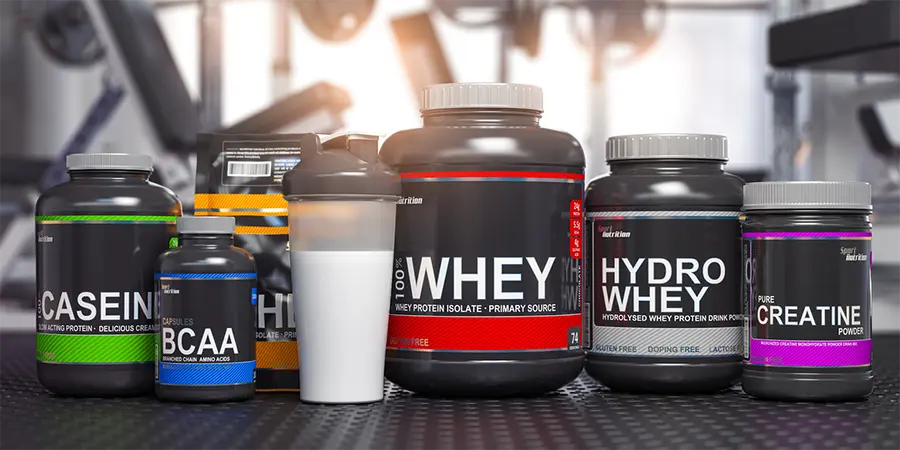
Ready to take your muscle-building journey to the next level? Understanding hypertrophy is like unlocking the secret code to maximizing your gains and sculpting your dream physique. In this blog post, we’ll dive into 5 effective strategies that will help you master the art of hypertrophy and unleash your full potential in muscle growth. Get ready to transform your body and crush your fitness goals like never before!
Hypertrophy and Muscle Building

Hypertrophy, simply put, is the process of muscle growth that occurs in response to resistance training. When you lift weights or engage in strength exercises, microscopic tears form in your muscle fibers. This triggers a repair and growth process, leading to bigger and stronger muscles over time.
Muscle building is not just about aesthetics; it also plays a crucial role in enhancing overall strength and performance. By focusing on hypertrophy, you can increase your muscle mass, boost metabolism, and improve functional movement patterns.
Understanding the science behind hypertrophy allows you to tailor your nutrition and training strategies for optimal results. It’s all about finding the right balance of macronutrients, calorie surplus, progressive overload in workouts, adequate rest periods between sessions.
By prioritizing hypertrophy in your fitness journey, you are setting yourself up for long-term success and sustainable gains. Embrace the process with dedication and consistency – the results will speak for themselves!
Nutrition for Hypertrophy: Macronutrient balance and calorie surplus
Nutrition plays a crucial role in achieving hypertrophy and building muscle. Macronutrient balance is key, ensuring you’re getting enough protein, carbohydrates, and healthy fats to support muscle growth. Protein is essential for repairing and building muscle tissue post-workout. Carbohydrates provide the energy needed for intense training sessions while fats help with hormone production.
To optimize muscle growth, aim for a calorie surplus by consuming slightly more calories than your body needs to maintain its current weight. This surplus provides the extra energy required for muscle repair and growth. However, it’s important to strike a balance – excessive calorie intake can lead to unwanted fat gain instead of lean muscle mass.
Focus on whole, nutrient-dense foods like lean proteins, complex carbohydrates, fruits, vegetables, and healthy fats to fuel your workouts and promote hypertrophy effectively.
Training for Hypertrophy: Progressive overload and muscle stimulation

Training for hypertrophy involves incorporating key principles like progressive overload and muscle stimulation. Progressive overload is all about gradually increasing the demands placed on your muscles over time by adjusting factors like weight, reps, or sets during your workouts. This challenges your muscles to adapt and grow stronger.
Muscle stimulation is another crucial aspect of hypertrophy training. By focusing on proper form, mind-muscle connection, and targeting specific muscle groups through various exercises, you can ensure that you are effectively engaging and stimulating the muscles you want to grow.
Variety in your workouts is essential to prevent plateaus and keep making progress towards your muscle-building goals. Incorporating different exercises, rep ranges, tempos, and rest periods can help maximize muscle growth potential by continuously challenging your body in new ways.
Remember to listen to your body’s signals during training sessions – pushing yourself is important for growth but knowing when to back off to avoid injury is equally crucial. Building a solid foundation of strength before diving into more advanced techniques can set you up for long-term success in achieving hypertrophy results.
Importance of Rest and Recovery in Building Muscle
Rest and recovery are often overlooked aspects of building muscle, yet they play a crucial role in the hypertrophy process. When you push your muscles during training, micro-tears occur in the fibers. This is where rest comes into play – it allows your muscles to repair and grow stronger. Without adequate rest periods between workouts, your muscles don’t have time to recover fully.
Sleep is another vital component of the rest and recovery equation. During sleep, growth hormone is released, aiding in muscle repair and growth. Aim for 7-9 hours of quality sleep each night to optimize this process. Additionally, incorporating active recovery days into your routine can help prevent burnout and overtraining while still promoting blood flow to aid in recovery.
Listen to your body’s signals – if you’re feeling excessively fatigued or sore, it may be a sign that you need more rest. Remember, progress isn’t just made in the gym; it’s also made during periods of rest when your body has time to adapt and grow stronger.
Supplementing for Hypertrophy: Key supplements for muscle growth

When it comes to maximizing hypertrophy and muscle growth, incorporating key supplements into your regimen can be a game-changer. One essential supplement is protein powder, which helps meet your daily protein needs for muscle repair and growth. Creatine is another powerhouse supplement known for increasing strength and muscle mass by enhancing ATP production.
Branch-chain amino acids (BCAAs) are crucial for promoting protein synthesis and reducing muscle breakdown during intense workouts. Beta-alanine is a popular choice for improving endurance and delaying fatigue during high-intensity training sessions. Additionally, omega-3 fatty acids aid in reducing inflammation post-workout, supporting overall recovery.
Vitamin D plays a vital role in maintaining optimal testosterone levels necessary for muscle building. Glutamine can help prevent muscle breakdown and support immune function under strenuous training conditions. By strategically incorporating these key supplements into your routine, you can enhance your hypertrophy efforts effectively.
Putting it all together: Designing a hypertrophy-focused workout plan
Designing a hypertrophy-focused workout plan involves combining nutrition, training, rest, and supplementation effectively. Start by setting clear goals and understanding your body’s needs. Focus on consuming enough protein to support muscle growth and maintaining a calorie surplus for energy.
Incorporate compound exercises like squats, deadlifts, and bench presses into your routine to stimulate multiple muscle groups simultaneously. Gradually increase the weight you lift over time to ensure progressive overload and continued muscle stimulation.
Remember that adequate rest is just as crucial as intense workouts. Muscles grow during periods of rest, so make sure to prioritize quality sleep and allow for sufficient recovery between training sessions.
Consider adding key supplements such as creatine or whey protein to enhance your muscle-building efforts. Supplements should complement a well-rounded diet rather than replace whole foods.
Designing a hypertrophy-focused workout plan requires consistency, dedication, and patience. Listen to your body’s signals, adjust accordingly when needed, and stay committed to achieving your muscle growth goals.
Conclusion
Understanding hypertrophy and implementing effective strategies for muscle building is crucial for achieving your fitness goals. By focusing on proper nutrition, progressive training techniques, adequate rest and recovery, strategic supplementation, and a well-designed workout plan, you can optimize muscle growth and strength gains. Remember that consistency and patience are key in the journey towards hypertrophy. Keep pushing yourself, staying dedicated to your routine, and adapting as needed to continually progress towards your desired physique. Embrace the process of building muscle with these strategies in mind, and you will undoubtedly see results over time. Here’s to your success in conquering hypertrophy and maximizing muscle growth!
To grow your muscles properly, read up more about hypertrophy here. Visit QAWire to know more about muscle building.
